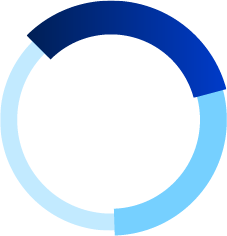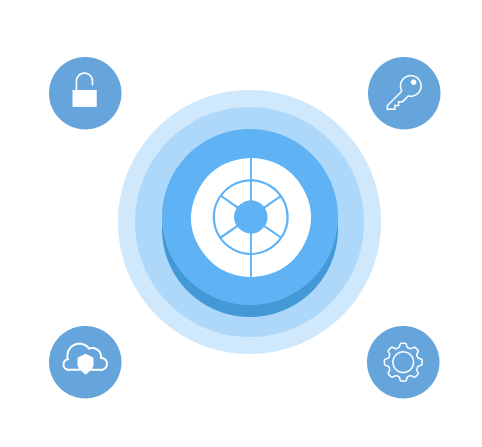What is SSPM?
SaaS Security Posture Management (SSPM) is a set of practices and tools designed to manage and monitor the security posture of cloud-based and service-based application environments. SSPM is designed to help security teams control and minimize risks to their application environment by ensuring all apps are properly configured. SSPM is vitally important for organizations of all sizes to not only maintain a secure SaaS environment but also ensure compliance with regulatory standards.
 1
1
The Current Threat Landscape: Why SSPM is Important
Managing the security posture of Software as a Service (SaaS) applications presents several challenges. These challenges stem from the inherently decentralized nature of SaaS environments, which often involve hundreds of vendors and thousands of diverse application settings, user permissions, and controls. These complexities make it difficult for security teams to manage their organization’s tool stack, respective users, and data while enabling day-to-day productivity requirements across the business.
Over the years, SaaS applications have evolved from relatively simple programs to highly complex tools that store massive amounts of valuable data. This is why cyber attackers target them so heavily.
“Throughout my tenure as a CISO, I’ve encountered numerous threats and breaches. The one constant truth is that threat actors invariably target data. As data increasingly migrates to SaaS platforms, these become the new frontline.” – Sunil Seshadri, Former Global CISO of Wells Fargo
These attacks have become more and more sophisticated, ranging from advanced spear phishing campaigns using phishing-as-a-service (PhaaS) tools like Tycoon and Evilginx to token compromise and help desk social engineering. We have also seen an uptick in session hijacking attacks, wherein cyberattackers steal session tokens in order to impersonate legitimate users and gain unauthorized access to SaaS applications. With SaaS breaches having increased by 300% year over year, it is important to develop a strategy to prevent such attacks.
Attackers also take advantage of the interconnected nature of third-party SaaS applications. For example, they may target vulnerabilities in app-to-app integrations or plugins to gain unauthorized access to more sensitive applications downstream. Internal users (i.e., employees) commonly install third-party apps, sometimes without consulting security or IT teams, and integrate them with more critical SaaS platforms (like Salesforce, Microsoft, Workday, etc.). As a result, if an attacker gains access to one of these unknown apps, they can move laterally to gain access to the business’s most critical data.
These are just a few examples of the threats targeting SaaS environments. These attacks have become much more sophisticated, elaborate, and frequent due to the massive potential reward for perpetrators. If they can gain access to these apps, they have a treasure trove of data at their disposal.
This is why SaaS Security Posture Management must go far beyond just securing and hardening individual applications. Organizations need to gain a comprehensive understanding of their entire SaaS inventory. This includes apps federated through their IdP as well as unauthorized apps—also known as shadow SaaS or shadow IT—and how they are integrated across your environment.
 2
2
The Limitations of Most SSPM Solutions Today
Most SaaS security solutions of today fall short of offering a complete, 360-degree view of businesses’ SaaS security readiness and the ability to defend themselves. Some common limitations of SSPM solutions are:
- Partial Protection: Most solutions provide limited visibility into security controls such as user activity tracking, anomaly detection, security risk evaluations, and gap analysis. These are central to maintaining a secure environment; adopting tools without full coverage results in a piecemeal strategy for managing security posture, forcing organizations to juggle and maintain several different tools at once. Organizations need full visibility into their entire inventory of SaaS applications, the interactions between them, and observed threat activity to inform a complete approach to SaaS posture.
- Lack of Contextual Insight: SSPM solutions often take a manual, rules-based approach and lack the context needed to fully understand the entire range of vulnerabilities targeting SaaS applications. They often focus on blanket recommendations without considering business processes, risk profiles, or the sensitivity of the data involved, potentially leading to redundant or ineffective remediation efforts.
- Lack of Sophistication: While SSPM solutions help reduce the likelihood of a breach by removing excessive privileges and ensuring applications are configured according to security best practices, these solutions rarely evolve with the fast-changing threat landscape. Skilled attackers are always finding ways to evade these guardrails using advanced attack methods that traditional SSPM solutions often lack visibility into altogether. Without a threat perspective, traditional SSPM solutions fall behind, becoming quickly inaccurate and manual to keep up-to-date.
- Regulatory Compliance: Organizations have hundreds of SaaS apps; larger organizations may even be managing thousands. Due to the amount of sensitive and legally protected data stored within these applications, they are now held under compliance audit scope. It can be very difficult to detect compliance gaps and make sure application settings and controls map to regulatory requirements–especially if this is done manually.
 3
3
The Next Evolution in SSPM
These limitations pose a need for a more sophisticated and all-compassing approach to SSPM.
Effective posture management requires full visibility into all of an organization’s SaaS applications (sanctioned and unsanctioned) and their integrations, including third-party connections. This includes understanding the associated risks and identifying the core applications these integrations connect to, so security teams can track and monitor data access patterns and take action accordingly.
With that said, here are some practical steps and strategies for effective SSPM in modern organizations.
1. Full Visibility and Inventory of All Applications:
An SSPM solution should provide complete visibility into all SaaS applications used within an organization, including both sanctioned and unsanctioned apps. This involves monitoring user activity, configurations, and data access across these applications.
This includes continuous, automated monitoring of SaaS applications for potential security risks, such as misconfigurations, policy violations, and suspicious user behavior, with real-time alerts to enable rapid response.
2. Automated SaaS Compliance:
A modern solution should take an automated approach to regulatory compliance by mapping SaaS configurations to regulatory frameworks in order to demonstrate compliance. Such features could include:
- Automated evidence collection to reduce audit preparation times
- Alerts to quickly fix non-compliant app controls
- Compliance customization using organization-specific frameworks
- Automatically detect and fill compliance gaps in minutes
This reduces the risk of human error by eliminating manual reviews and also increases operational efficiency by freeing up internal personnel to focus on more value-added tasks.
3. Streamline Application Configuration
At least 1-in-6 SaaS breaches result from misconfiguration, and 95% of businesses experience configuration drift. This leads to vulnerabilities but can be easily avoided with the right solution.
A modern SSPM solution should remedy this problem by automatically identifying and reducing over-privileged accounts and removing dormant accounts. It should also provide a dashboard overview of SaaS posture across apps so internal users can observe all app configurations through one central portal and make adjustments accordingly.
4. Risk Assessment and Prioritization
Assessing the risk associated with each SaaS application, user, or action based on its potential impact on the organization is of the utmost importance, allowing for more effective prioritization of remediation efforts.
Assigning accurate risk scores to already-identified vulnerabilities, enabling organizations to focus on the most critical issues first, enables security teams to work more efficiently. Instead of constantly plugging holes in a dam, they can instead focus on risks most critical to their business.
 4
4
Integration with Existing Security Tools
Compatibility and integration with existing security infrastructure, such as SIEM, IAM, CASB, and other workflows, to provide a holistic security approach is crucial. Otherwise, organizations end up with a tangled mess of technology sprawl, with different tools not talking to one another and operating independently.
SSPMs that offer robust APIs and pre-built connectors to integrate seamlessly with a wide range of SaaS applications and third-party security solutions will be much easier to integrate and save internal teams time and headaches.
Building a Stronger SaaS Security Solution, Together
Strategic technology partnerships further strengthen Obsidian’s platform by providing a deeper understanding into SaaS and PaaS applications. This approach informs our security strategy, ensuring best practices are built-in to protect the 25+ million users and 1 million applications we secure every day.
 5
5
The Obsidian Advantage
Obsidian’s platform changes the game by combining SSPM with Identity Threat Detection and Response (ITDR), building end-to-end SaaS security. Detected threats continuously inform and refine security rules through Obsidian’s AI-powered dynamic feedback loop, delivering automated defenses that adapt as your organization grows. This ensures full visibility and proactive protection across SaaS.
Protect Your Entire SaaS Ecosystem
| Application Posture | Automate SaaS Compliance | Prevent SaaS Configuration Drift | Manage Excessive Privileges | Manage Shadow SaaS |
| We help organizations manage risk comprehensively across the entire SaaS ecosystem, presenting a single source of truth in order to identify and prioritize potential security concerns. | Track compliance through our dashboard, which automates evidence collection and sends alerts to quickly fix non-compliant issues. Detect compliance gaps to align with regulatory requirements within minutes and get recommended actions to meet any standard | Prevent configuration drift by observing all app configurations in a single view and integrating with existing ticketing systems for quick and easy resolution. Gain context with real-time monitoring and alerts to catch configuration drift before it leads to a breach. | Quickly identify overprivileged accounts or accounts without the proper security controls. Manage privilege creep by revoking dormant accounts and monitoring risk associated with privileged accounts. | Identify unsanctioned apps and block those that are unapproved or deemed to be high-risk. Protect critical data by identifying all app owners and reducing SaaS sprawl. |

